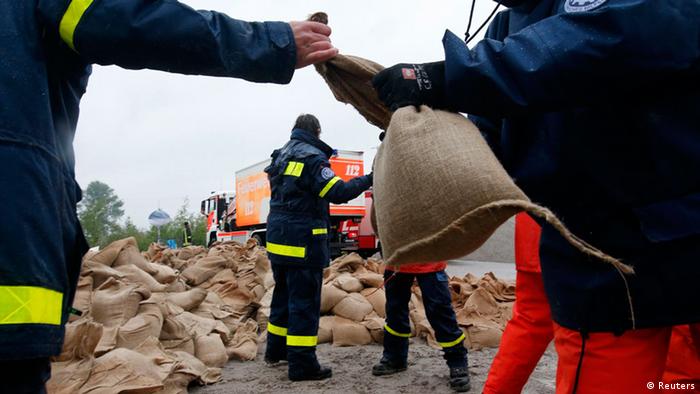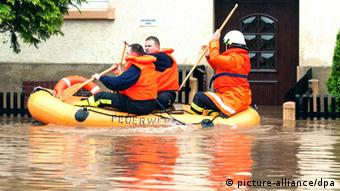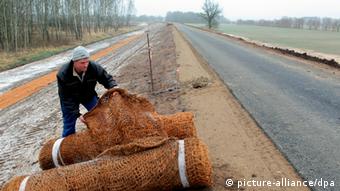As water levels rise in Germany's flood zones, the situation is growing more dramatic. It has been just over a decade since the country's last flood crisis, but little has been learned from that, critics say.
In 2002, torrential rainfall had led the Elbe River and its tributaries to burst their banks. Unprecedented water levels were recorded particularly in eastern Germany. The first major flood of the new century put the issue of flood prevention at the top of the political and social agenda.
But Andreas Schumann, a water supply expert at Germany's Ruhr University, says the memory of the 2002 catastrophe has already faded, adding, "We have an incredible deficit when it comes to awareness about flooding."
That is a problem in places where people have moved closer to the rivers from generation to generation, which is true in many parts of Germany.
"We must keep flooding areas free of development," Schumann stresses, but notes that this principle is often abandoned due to people's tendency to underestimate the risks of severe flooding.
The water expert adds that many feel a false sense of security due to the preventative technical measures undertaken, like higher and more stable dams and levies.
No perfect protection
Saxony was among the German states especially hard hit by the 2002 flooding. When asked how Saxony responded in the years afterward, state parliamentarian and environmental expert Andreas Heinz first said that much money was invested in technological measures like improved dams or larger reservoirs intended to absorb water in emergency situations.
Andreas Schumann confesses that such measures represent a step forward. "There, the weak spots were recognized and improved," he said, but added, "There is no such thing as absolute flood protection and technological flood prevention measures must always include considerations of what happens when they fail."
Winfried Lücking, an expert on flood protection with the German environmental group BUND, sees things differently. He says there has not been enough consideration of how the dangers of flooding could be better controlled. At a national conference on river issues in 2002, the federal government urged people to give the bodies of water more space. The point in doing so is reducing water levels by allowing more room for the water to flow, including into flood plains with dikes positioned somewhat further away from riverbanks than they often are currently.
"Regrettably, little has been done," Lücking says. On the Elbe, just a handful of dikes were put in place - and partly due only to heavy pressure and involvement from environmental groups.
'Each event is different'
Creating adequate dikes, however, represents a mammoth project that cannot be completed quickly. For generations, people have pushed the dikes closer and closer to the rivers themselves as areas near their banks have been developed more heavily. Lücking notes this process cannot simply be reversed within a decade, particularly in light of the complicated planning involved.
Undertaking flood prevention measures collides with a number of other interests. Landowners do not want to give up their fields, homeowners are unwilling to part with their residences and communities fear limitations to their development potential. As such, resistance runs high when it comes to allowing more space for rivers to spill over their banks.
"Everyone says, you're welcome to do that, just not near us," explains Winfried Lücking.
Saxony state parliamentarian Andreas Heinz knows all about opposition to such measures. Since 2002, he says, resistance to anti-flooding plans has grown among the people these measures are intended to protect.
"There are people affected who say, 'I don't want a higher dam because then I can only see the dam and don't have a view,'" the CDU politician says.
But even if political and civic forces can agree in the future to more measures against extreme weather, floods will still occur. And as long as people settle near rivers, damage can be expected.
"Every flood shows us new weaknesses because each event is different. The longer we observe extreme occurrences, the more we learn about the risks nature creates," said Andreas Schumann. It follows that combating flood damage represents a permanent task.
"We are in a constant battle with nature that presents us again and again with new and unknown flooding scenarios," Schumann noted.




No comments:
Post a Comment